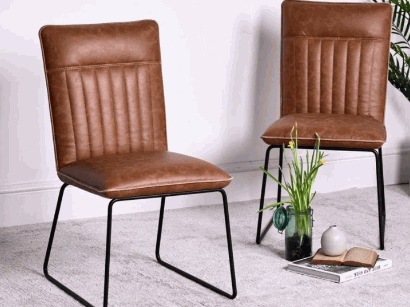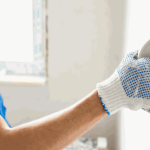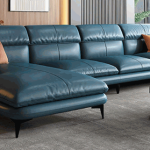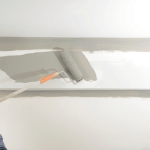Faux leather chairs can be a stylish addition to any home or office space, but what if you want to change up the color to better match your decor?
Dyeing faux leather chairs is a great way to customise your furniture and give it a fresh new look.
We will explore the process of dyeing faux leather chairs, including the different types of dye to use, the steps involved in dyeing, and how to properly care for your newly dyed chairs.
If you’re curious about the possibilities of transforming your faux leather chairs, keep reading to discover all you need to know.
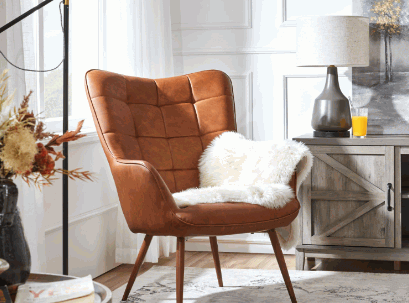
What Is Faux Leather?
Faux leather, also known as artificial leather, is a synthetic material made to resemble real leather. It is commonly used in upholstery, clothing, and accessories due to its versatility and cost-effective nature. Unlike real leather, faux leather is typically made from a plastic polymer base, making it more environmentally friendly.
One of the key advantages of faux leather is its versatility, as it can be easily manufactured in various textures, colours, and finishes to suit different design preferences. This flexibility makes it a popular choice in industries ranging from furniture and automotive to fashion and footwear.
Faux leather offers a more budget-friendly option compared to genuine leather, making it accessible to a wider range of consumers without compromising on style or quality. Its synthetic composition also means that it is less susceptible to cracking, peeling, or fading, ensuring durability over time.
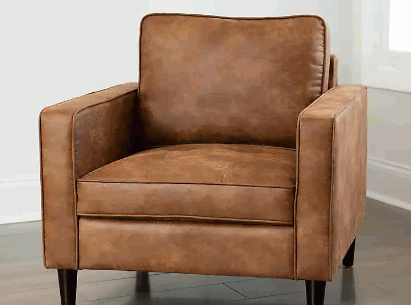
What Is The Difference Between Faux Leather And Real Leather?
The primary difference between faux leather and real leather lies in their composition and production. While real leather is derived from animal hide, faux leather is a synthetic material created to mimic the look and feel of genuine leather. In terms of upholstery, faux leather offers a more affordable alternative to traditional leather settees.
Real leather boasts a unique texture and natural imperfections that give it a distinct character appreciated by many. On the other hand, faux leather is often more uniform in appearance due to it being man-made.
Durability is another crucial factor to consider; real leather tends to be more durable and can age beautifully with proper care, developing a rich patina over time. Faux leather, while generally easier to clean and maintain, may not hold up as well over extended periods of use.
The environmental impact of these materials differs significantly, with real leather production raising concerns about animal welfare and sustainability, whereas faux leather presents a more vegan-friendly option despite potential concerns about its synthetic production processes.
Can You Dye Faux Leather Chairs?
Yes, it is possible to dye faux leather chairs to achieve a new look or refresh the existing colour scheme. By using specialised leather paint or acrylic paint designed for faux leather surfaces, you can customise the appearance of your chairs to match your preferred style.
When embarking on the process of dyeing faux leather chairs, it is crucial to select the right dye that adheres well to synthetic materials. Opt for high-quality leather paints that are specifically formulated for faux leather to ensure a seamless finish. These dyes come in a variety of colours, allowing you to create a custom look that complements your décor.
One of the significant benefits of customising furniture through dyeing is the ability to breathe new life into old pieces. Instead of purchasing new chairs, dyeing them can save money while offering a creative outlet for personal expression.
Learn more: How To Dye A Leather Sofa
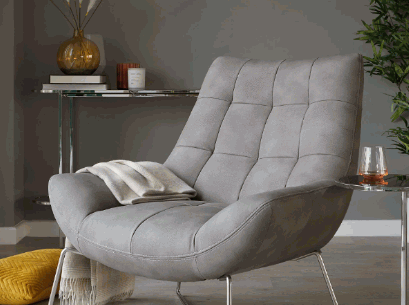
What Type Of Dye Should You Use?
When dyeing faux leather, it is essential to choose the right type of dye to ensure optimal results. Options include specialised leather paint formulated for faux leather surfaces or high-quality acrylic paint that adheres well to synthetic materials.
Specialised leather paint designed for faux leather provides a durable finish that mimics the look of real leather. It offers excellent adhesion and flexibility, resulting in a long-lasting colour application that maintains the material’s soft texture.
On the other hand, acrylic paint is a versatile option that can be used on various surfaces, including faux leather. It is known for its quick-drying properties and a wide range of vibrant colours, making it a popular choice for artistic projects.
What Are The Steps To Dye Faux Leather Chairs?
Dyeing imitation leather chairs involves several key steps to ensure a successful outcome. These steps typically include preparing the surface, applying the dye using a sponge or brush, allowing for drying time, and finishing with a protective sealant.
- To start the process, begin by cleaning the surface of the chair thoroughly with acetone to remove any dirt, oils, or residues that could affect the dye’s adhesion.
- Once the surface is clean, use a sponge or brush to apply the dye evenly, working in small sections to ensure thorough coverage.
- Allow the dye to dry completely before applying additional coats if needed.
- For a professional finish, consider lightly sanding between coats to smooth out any imperfections.
Finish off the dyeing process by applying a protective sealant to enhance durability and prevent colour fading.
How To Prepare The Faux Leather Surface For Dyeing?
Properly preparing the faux leather surface before dyeing is crucial for achieving a smooth and even finish. Steps for surface preparation may include cleaning the surface with a mild detergent, removing any existing finishes with acetone, and ensuring the material is free from dirt or debris.
- Leather prep plays a vital role in ensuring that the dye adheres effectively and uniformly to the faux leather.
- Before applying the dye, it is imperative to allow the surface to dry completely to avoid any unwanted reactions between the dye and moisture.
- Using sandpaper to lightly roughen the surface can promote better dye penetration and adhesion.
How To Apply The Dye On Faux Leather?
Applying dye on imitation leather can be done using various methods such as sponge application or airbrush techniques. Ensuring even coverage and seamless blending of colours is essential for a professional-looking finish on imitation leather surfaces.
When opting for sponge application, ensure the sponge is damp but not soaking wet to prevent over-saturation of the imitation leather. Use gentle, circular motions to apply the dye uniformly, starting from one end and working your way across. Alternatively, for a more precise and controlled approach, consider utilising an airbrush method. This technique allows for intricate designs and gradients but requires practice to master the art of airbrushing on imitation leather. Remember to test the dye on a small, inconspicuous area first to gauge the colour outcome before applying it to the entire surface.
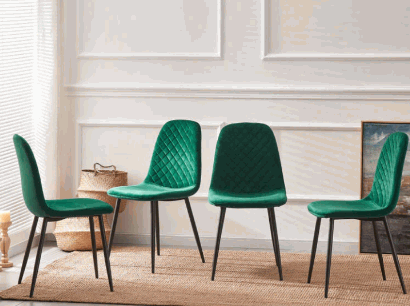
How To Seal The Dye On Faux Leather?
Sealing the dye on imitation leather is essential to protect the colour and ensure durability. Using a quality finishing product like polyurethane can help seal the dye, providing a protective layer against wear and tear.
When applying a sealant like polyurethane, it forms a barrier on the surface of the imitation leather, preventing the dye from fading or rubbing off. This sealing process not only enhances the longevity of the colour but also adds a glossy or matt finish, depending on the type of polyurethane used.
The benefits of properly sealing the dye on imitation leather are numerous. It not only safeguards the intricate colouring work but also makes the surface easier to clean and maintain.
What Are The Benefits Of Dyeing Faux Leather Chairs?
Dyeing faux leather chairs presents several advantages, including the opportunity for customisation to match your decor, cost-effectiveness compared to buying new furniture, and eco-friendly practices by upcycling existing pieces.
When you opt for dyeing your faux leather chairs, you unlock a world of customisation possibilities. Imagine transforming a plain chair into a vibrant focal point that perfectly complements your style and color scheme. This level of personalization is hard to achieve with pre-made options.
The cost-effectiveness of dyeing is hard to beat, saving you money compared to purchasing brand-new furniture. Not only are you saving money, but you are also participating in eco-friendly practices by extending the life of existing furniture, reducing waste, and supporting sustainable consumption.
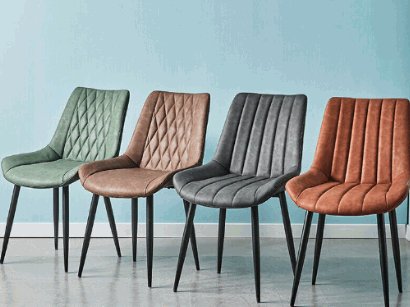
Customisation
One of the key benefits of dyeing faux leather chairs is the ability to customise the look and design according to personal preferences.
- Experimenting with customisation allows for a personal touch, enabling one to match the chair with existing décor or create a striking focal point in the room.
- From subtle gradients to bold hues, the dyeing process opens up a world of possibilities, inviting individuals to unleash their imagination and turn ordinary chairs into extraordinary works of art.
Cost-Effective
Dyeing faux leather chairs is a cost-effective solution to furniture updates, offering a budget-friendly alternative to purchasing new pieces. With proper dye application and coverage, you can transform existing chairs at a fraction of the cost.
By carefully selecting the appropriate dye colour and type, you can achieve a professional finish that rivals brand-new furniture.
Maximising coverage is key to ensuring a seamless result, so preparing the surface thoroughly and applying the dye evenly is crucial.
The cost savings of dyeing compared to buying new chairs are substantial and allow for customisation to suit your personal style.
Eco-Friendly
Dyeing faux leather chairs contributes to eco-friendly practices by upcycling existing furniture pieces rather than discarding them. This sustainable approach reduces waste and promotes environmental consciousness through creative design solutions.
When you revamp your faux leather chairs with a fresh coat of dye, you not only give them a new lease of life but also participate in a positive environmental cycle. Dyeing allows you to personalise your decor, adding a unique touch that reflects your style while keeping sustainability in mind.
By embracing upcycling and dyeing as part of your home decor routine, you are making a conscious choice to reduce your carbon footprint and conserve resources. Imagine the satisfaction of transforming worn-out furniture into vibrant statement pieces that align with your eco-conscious values!
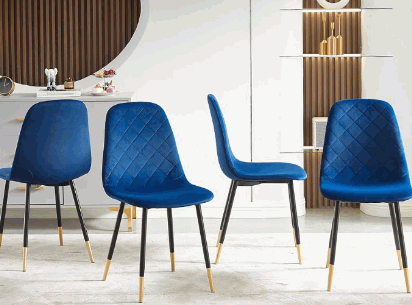
What Are The Risks Of Dyeing Faux Leather Chairs?
Whilst dyeing faux leather chairs offers aesthetic benefits, there are certain risks involved, such as potential darkening of the material, challenges in achieving even colour distribution, and the need for precise repair in case of damage during the dyeing process.
Darkening of faux leather can be a significant concern when dyeing, as the original colour may alter unpredictably, affecting the overall look of the chair.
Issues with colour distribution can arise, leading to patchy or uneven colouring, which can detract from the desired final appearance.
When contemplating dyeing faux leather chairs, it’s crucial to consider the potential repair requirements, as any damage during the process may necessitate meticulous attention to restore the chair’s appearance.
Damage To The Material
One of the risks of dyeing faux leather chairs is the potential for material damage, especially if the dyeing process is not carried out correctly. Excessive use of certain chemicals or improper application techniques can lead to irreversible harm to the faux leather surface.
It is crucial to pay attention to the type of dye being used and its compatibility with faux leather to avoid any adverse reactions that could result in damage. Ensuring proper ventilation during the dyeing process can prevent chemical buildup that may harm the leather sofa. Adequate surface preparation, such as cleaning and drying the faux leather thoroughly before dye application, is essential to prevent any potential damage. Taking these precautions can significantly reduce the risk of harm to the faux leather chairs during the dyeing process.
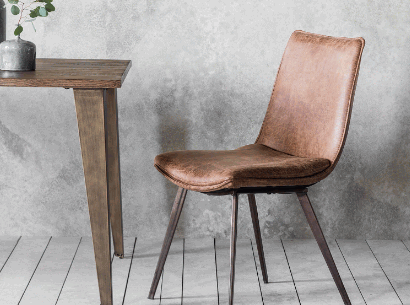
Uneven Colour Distribution
Uneven colour distribution is a common risk when dyeing faux leather chairs, leading to inconsistencies in the final appearance. Factors such as improper dye application, inadequate blending, or insufficient coverage can result in patchy or streaky finishes.
To overcome these challenges and achieve a uniform colour outcome, it is crucial to follow a few key steps. Ensure that the dye is applied evenly across the entire surface of the chair. Using an artist sponge can help with this, as it allows for better control and coverage. Focus on blending the dye thoroughly to avoid any concentrated areas that may cause colour discrepancies.
Another helpful tip is to apply multiple thin layers of dye rather than one thick coat. This not only promotes better absorption but also assists in creating a smooth and consistent colour finish. Remember to allow each layer to dry completely before adding the next to prevent colour build-up and uneven saturation. By implementing these techniques and utilising the right tools, such as an artist sponge, you can master the art of dyeing faux leather chairs with precision and achieve a flawless, colour-rich result.
Difficulty In Achieving Desired Colour
Difficulty in achieving the desired colour is a key risk in dyeing faux leather chairs, especially when working with specific hues or shades. Factors like colour absorption rates, material composition, and the use of spray paint can affect the final colour outcome.
One way to tackle colour discrepancies is to pre-treat the faux leather with a dye primer to enhance colour absorption and ensure a more even dye application. Selecting high-quality dyeing products specifically formulated for faux leather can help in achieving accurate and vibrant colours. It is essential to conduct a colour test on a small, inconspicuous area of the chair before proceeding with the full dyeing process to avoid any surprises in the final result.
How To Care For Faux Leather Chairs After Dyeing?
After dyeing faux leather chairs, proper care and maintenance are essential to preserve the colour and finish over time. Regular dusting, gentle cleaning with a damp cloth, and avoiding harsh chemicals can extend the shelf life of the dyed surface.
Additionally, finishing products specifically designed for faux leather can help maintain the colour vibrancy and protect against wear and tear. Consider using a protective spray or conditioner to enhance the durability of the dyed surface.
When dealing with stains or spills, blotting gently with a clean cloth is recommended to prevent the colour from fading. It’s crucial to address any spills promptly to avoid deep penetration into the material.
For an overall cleaning routine, a mild soap solution or a product formulated for faux leather can be used sparingly. Test any cleaning agent on a hidden area first to ensure compatibility with the dye.
